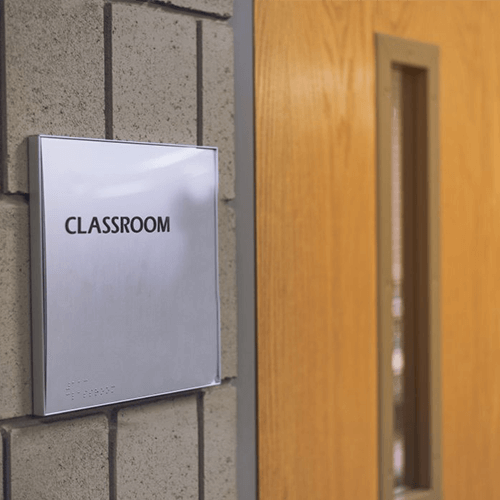
While it's always been important, the call for classroom door security is more urgent today than ever before. Active shooter situations were once rare, but today they are all too frequent and require addressing. The safety of students, faculty and staff is at stake, and the right classroom door could be a lifesaver that provides shelter from harmful intruders.
If you're the contractor or building manager responsible for providing classroom door protection, there are several things to consider. We'll discuss what to look for in a breach-resistant door – including its composition, door locks, view panels and other features. CDF Distributors, a trusted supplier of commercial doors for schools, leads the discussion to help you choose the best class doors to suit your property.
Metal or wood – which is the best choice for a breach-resistant door? Steel is obviously the strongest, but if you're outfitting an entire school, metal doors will likely be out of your price range. The generally accepted practice is to install steel doors at entrances and wood doors in classrooms. Before buying any door, know what features are must-haves for your application.
Aside from classroom door security concerns, keep in mind that school doors take a lot of punishment day after day. Choose a durable, high-quality wood door for confidence in safety and security. Here are some of the qualities a wooden classroom door should possess:
Schools and universities typically use high-quality, heavy-duty steel for entry doors. A metal classroom door with a proper lock is an excellent way to secure a school entrance. Steel doors are a strong deterrent for armed intruders.
Choosing a lock that ensures the best classroom door security can be tricky. School administrators continue to debate what the best door locks are. While most agree that a mortise lock is best, they don't always agree on how it should operate. It's not just about having a breach-resistant door – you must ensure students can quickly evacuate the classroom in an emergency such as a fire, tornado or other disaster.
Many municipalities have regulations that will determine what type of lock mechanism you need to use to achieve classroom door security. Typically, there are four options:
For more information on the topic, review the National Association of Fire Marshalls (NASFM) guidelines on Classroom Door Security & Locking Hardware.
CDF Distributors has wood and metal class doors with the features you need to provide maximum protection for students and staff. Choose the size, style, lock, window and other attributes to customize your classroom door. Build a quote so we can get started today!